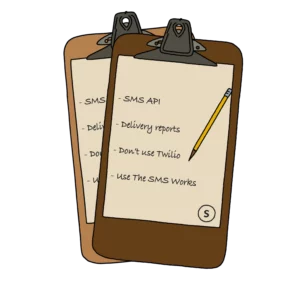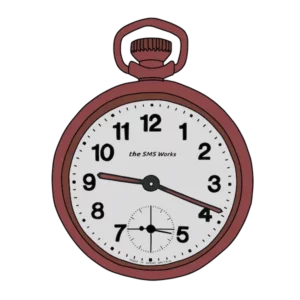When is the best time to send an SMS marketing campaign for maximum response?
The best time to send an SMS marketing text message will vary depending on factors such as your target audience, their behaviour patterns, and the nature of your message.
“Timing is more than just picking a random hour of the day. It’s about understanding your audience’s habits and aligning your message with the moments when they’re most likely to engage.” Archie Macfadyen – The SMS Works
However, there are some general guidelines that can help you determine the optimal timing:
Weekdays vs. Weekends: Generally, weekdays tend to be better for SMS marketing as people are more likely to be engaged with their phones during workdays. It also depends on your audience and the nature of your message. Some businesses may find weekends effective for certain promotions.
Time of Day: Mid-morning (around 10 am) and early afternoon (around 2 pm) are often considered good times for sending SMS messages. This is simply because people are likely to check their phones during breaks or lulls in their day. This will vary depending on your specific audience. Avoid sending messages outside of of business hours.
Avoiding Busy Times: Try to avoid sending messages during peak commuting hours (early morning and late afternoon/evening) as people may be less likely to engage with their phones during these times.
Consider Time Zones: If your audience spans different time zones, it’s crucial to send messages at times that are convenient for each time zone. Sending messages too early or too late in a particular time zone can lead to annoyance and decreased engagement.
Test and Analyse: The best way to determine the optimal time for sending SMS messages to your audience is through testing and analysing data. Experiment with different send times and analyse metrics such as open rates, click-through rates, and conversion rates to identify patterns and trends.
Frequency: Consider the frequency of your messages. Bombarding your audience with too many messages, regardless of the time, can lead to irritation and increased opt-out rates.

The Role of A/B Testing and Data Analysis
Every audience is unique, and what works for one may not necessarily work for another. This is where A/B testing and data analysis come into play.
A/B testing allows marketers to experiment with different send times and analyse the performance metrics, By systematically testing variations and measuring outcomes, businesses can uncover valuable insights about their audience’s preferences and behaviour patterns.
Remember, the key is to understand your audience’s behaviour and preferences and tailor your SMS marketing strategy accordingly. A/B testing and data analysis will help refine your approach over time.
Related blog articles
What is SMS pumping fraud or AIT?
Understanding SMS delivery reports – a guide

